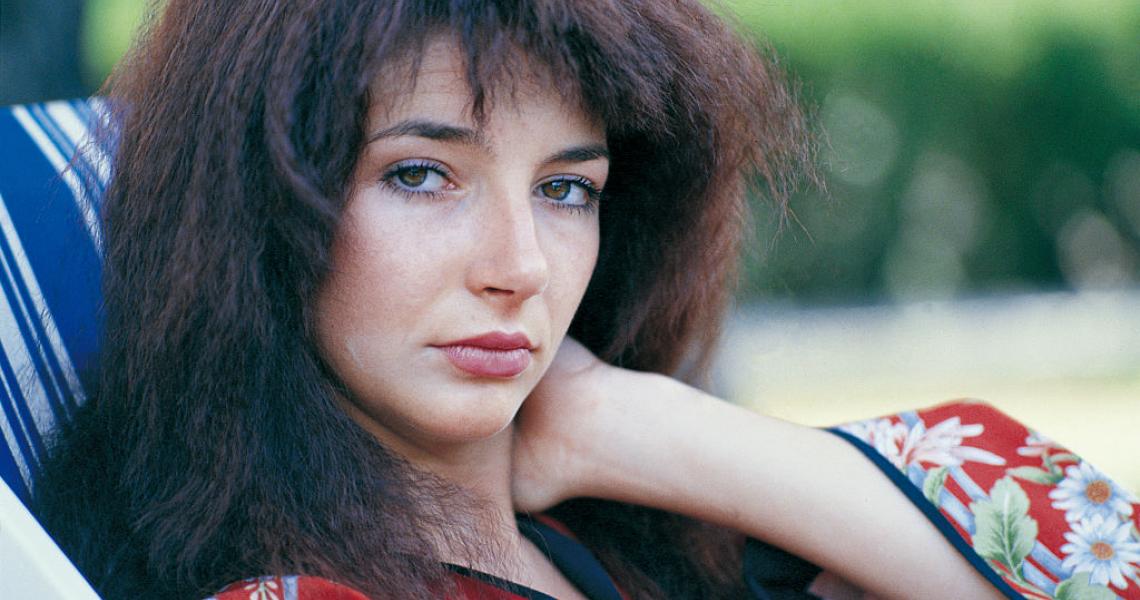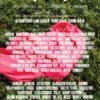As you’re doubtless aware, Kate Bush has just reached no.1 in the UK singles chart with ‘Running Up That Hill.’ Thanks to its inclusion in the fourth series of Stranger Things, a renewed interest in the track has seen her set records for the oldest female artist to reach no.1 in the UK, the longest time for a track to reach no.1, and finally, the longest gaps between no.1 singles on the chart. In the normal course of events I almost certainly would have included this track on the list, but let’s go with these for our starters XI.

Wuthering Heights (1978)
Where it all began. Getting to no.1 is no mean feat for anyone, but it was also the first time a woman had topped the British charts with a self-written song. Aged only nineteen at the time of its release, the song is influenced by the character of Cathy in Emily Bronte‘s 1847 novel Wuthering Heights. It was the beginning of many examples of La Bush drawing on film and literature. Amongst so many precedents, this was a rare case of not one but two videos being made; both of which have become rather iconic. It was completely out of kilter with the prevailing trends of punk and disco, and perhaps all the better for it.
Hammer Horror (1978)
In an era when so much time can pass between album releases from an artists these days that several life milestones may be reached for listeners (are you listening, Robert Smith?), it seems strange that Ms. Bush had only a short time to make her second album, which came out in November 1978. It’s not always been given that high a ranking on fans lists of her albums, though this writer would argue strongly for it being her most underrated.
The closing track is a song that genuinely sends shivers down the spine. Whilst the title references the Hammer Horror studios, it is actually about a production of Victor Hugo’s The Hunchback Of Notre-Dame. Bush conceived of the song after viewing the film Man Of A Thousand Faces. “The song was inspired by seeing James Cagney playing the part of Lon Chaney playing the hunchback”, Bush stated in 1979. “He was an actor in an actor in an actor, and that’s what I was trying to create.” The story of the song concerns an actor who gets thrust into the lead role of the Hunchback after the original actor dies in an accident on the film set. The narrator of the song ends up being haunted by the ghost of the jealous original actor, who was a former friend.
Breathing (1980)
More record breaking times. Bush’s third studio album, 1980’s Never For Ever, was not only her first no.1 album, but the first studio album by a female singer to reach no.1 in the UK. It was also co-produced by her. While ‘Babooshka‘ would be the biggest hit from the album, it’s the album closer which truly stuns.
In keeping with many of her unusual takes on situations, ‘Breathing‘ is sung from the point of view of a foetus, a role she plays in the accompanying video, absorbing the nicotine from her mother but also the affects of nuclear fallout – there is a spoken word part describing the flash from a nuclear bomb, including the mushroom cloud.
The legendary Roy Harper performs backing vocals on the track. Interviewing him over a decade ago, he confirmed that he also appears in the video when they are trying to cross the river, which was ‘bloody freezing.’
The Infant Kiss (1980)
The haunting album track ‘The Infant Kiss‘ from Never For Ever would be an unlikely track for a single in almost any era, but that’s not to say it’s not a hugely effective piece of music. Her film and literary influences came to the fore once again, with this song which is influenced by Jack Clayton‘s 1961 psychological horror film The Innocents, starring Deborah Kerr, and which in turn was based on Henry James‘ 1898 novella The Turn Of The Screw. Without giving too much away about book, film or indeed song, it deals with a woman strangely attracted to a boy who appears to be possessed by the spirit of a dead man. There has been much written about the meaning of the novella – this author was certainly involved in numerous discussions about it as a Philosophy undergraduate.
Please note: there is no official video, but this fan-made video incorporates scenes from The Innocents which accompanies it very well indeed.
There Goes A Tenner (1982)
Kate Bush later described her fourth album, 1982’s The Dreaming as her ‘she’s gone mad’ album. It’s a great album, but it’s possible that many people simply weren’t ready for it at the time and sales and chart positions suffered accordingly. It may not be one of her most immediately accessible albums but it’s a rewarding listen. Certainly at the time it was her most adventurous album to date, and sections of the British record buying public must have been able to deal with music that was a bit more adventurous – around this time, both ‘Ghosts‘ by Japan and ‘O Superman‘ by Laurie Anderson were top five hits. Ah well.
‘There Goes A Tenner‘ missed the charts altogether in the UK, which is a shame as this music hall meets avant-pop song is rather fun. Using accents that seem to swing from almost aristocratic to cockney (or mockney, if you will), it concerns a group of bungling bank robbers who aren’t actually hardened criminals but actually way out of their depth, and by the end of it want nothing more than just to go home.
And yet…the ending of the song is rather sinister. The reality of a prison sentence possibly terrifying the robbers? The thought of what actually being robbers actually means?
Cloudbusting (1985)
Kate Bush’s fifth album The Hounds Of Love is her best-selling in both the UK and US, and at the time was viewed as being something of a comeback (she had, after all, not released an album for three whole years!) I’m going to stick my head above the parapet and argue that this might even be a better song than ‘Running Up That Hill.’
Accompanied by what may well be the greatest music video ever made (‘In your opinion, Ed’! – exasperated Ed.) which starred Donald Sutherland, Bush yet again drew inspiration from a book. In this case the 1973 Peter Reich memoir A Book of Dreams,] which Bush read and found deeply moving, “Cloudbusting” is about the very close relationship between psychiatrist and philosopher Wilhelm Reich and his young son, Peter, told from the point of view of the mature Peter. It describes Peter’s memories of his life with his father on their family farm, called Organon, where the pair spent time ‘cloudbusting’, a rain-making process which involved using a machine designed and built by Reich to point at the sky. The song’s lyrics further describes the elder Reich’s abrupt arrest and imprisonment, the pain of loss the young Peter felt, and his helplessness at being unable to protect his father. Perhaps most moving of all is the way is the underlying helplessness of the child as he realises that adults are fallible.
Hello Earth (1985)
Kate Bush never seemed to be bothered about current musical fashions or trends, an approach which has always served her well. In 1985, the idea of a concept album was deeply unfashionable (probably to its associations with prog rock), yet the second side of The Hounds Of Love album is a suite of seven songs called The Ninth Wave. Influenced by the poetry of Alfred, Lord Tennyson, this astounding record managed to knock Madonna from the top of the album charts. It moves through deeply affecting and moving pieces, perhaps most effectively on this song, which is an out of body experience looking down at the earth. Rather like watching 2001: A Space Odyssey, this is an experience open to many interpretations and benefitting from repeated encounters. The hugely affecting chorale in ‘Hello Earth’ is a segment from the traditional Georgian song ‘Tsintskaro‘, performed by the Richard Hickox Singers.
Experiment IV (1986)
A year later, Kate Bush released her first and, so far, only greatest hits package The Whole Story. The one new track ‘Experiment IV” was the one new track, which ended up being released almost simultaneously with her duet with Peter Gabriel ‘Don’t Give Up.’
Set at a military complex (possibly meant to be Porton Down, or at least as scary), the song tells of a secret military plan to create a sound that is sly and horrific enough to kill people. What happens at the end is unclear but Bush’s voice warns us that the ‘public are warned to stay off.’ In the Dawn French-starring music nearly every person working on the project is killed by the horrific sound, which is symbolised by Bush herself as she changes from an angelic apparition into an horrific monster. Top Of The Pops banned it.
This Woman’s Work (1989)
1989’s The Sensual World album was obviously more than what it said on the, umm, tin, but this rather evocative album really is remarkably sensual, though suffers, through no fault of its own from being the follow-up to Hounds.
Originally featured on the soundtrack to the 1988 film She’s Having A Baby, the song was originally written especially for the film, and then became the second hit from the album. Once again, Bush wrote from an unusual position – that of a man feeling helpless during an unexpected crisis during his partner’s childbirth, and worries about losing her. Here the idea of something being dismissed as being ‘woman’s work’ is turned on its head: the man cannot know what it is like to go through childbirth, and is torn between concern about losing the woman’s love and society’s expectations of how men are supposed to behave -‘I should be crying but I just can’t let it show.’ This single was accompanied by another stunning video, this time starring actor Tim McInnerny. The song was later covered by American soul singer Maxwell and completely reworked by Bush on her 2011 album Director’s Cut.
Deeper Understanding (1989)
If Kate Bush had seemed ahead of the curve with so much, it seems scarcely credible that she was anticipating people replacing human relationships with technology. Although remade for 2011’s The Director’s Cut (which saw her rework songs from The Sensual World and 1993’s The Red Shoes, the latter another rather underrated Kate Bush album), it’s actually the original version which is the more impressive.
Bush has often used technology to enhance her recorded work, but in this song, released the same year that Tim Berners-Lee invented the World Wide Web, shows anticipation of people becoming too dependent on technology as a substitute for real life (similar ideas are explored by erstwhile labelmates Kraftwerk on ‘Computer Love‘ and New Model Army on ‘225.’) The man in the song is starting to have a troubling relationship with his computer. Back in 1989, Kate Bush told Radio One that the song was about ‘the modern situation, where more and more people are having less contact with human beings. We spend all day with machines; all night with machines. You know, all day, you’re on the phone, all night you’re watching telly. Press a button, this happens. People really build up heavy relationships with their computers!’. While Science Fiction may sometimes give wildly optimistic visions of the future, this anticipated our present all too clearly.
Mrs Bartolozzi (2005)
The twenty-first century has seen a little of Kate Bush, though many of us long for more (the day I write this, there is much excitement, understandably, about an interview broadcast on Radio 4’s Woman’s Hour). This track, from the double album Aerial is about a woman watching her washing machine go round. If that sentence didn’t put you off, or make you snigger, I’m very glad, because it’s about taking pleasure in life, and I think you should investigate it for yourself…
Photo Credit
Angelo Deligio/Mondadori via Getty Image



